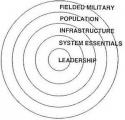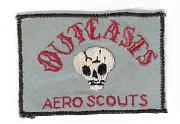Yes, an aircraft is much better than a missile in many (most) situations, but the AF beyond any other service is developing aircraft that are obscenely expensive, fragile and costly in money, time and labor to maintain. G-d forbid one of our new f22's gets hit, the composite wing skin is almost impossible to repair. Once you get even a scratch (that penetrates one layer) in most of these new composites it will eventually expand (there goes stealth and the stability of an already unstable aircraft.)
The AF wants to control all fixed wing research including UAV's. If they want to appear as though they are in any way with what’s going on they have to develop a CAS aircraft that meats the following requirements:
1. Alluminium/titanium superstructure
2. The composite skin and aerodynamic surfaces must be able to be removed and replaced quickly (like an F1 car, sort of.)
3. Light weight (hence 1 & 2) with a long loiter time and high payload capacity.
4. Must be highly maneuverable at low altitudes with the capability to maneuver like a dive-bomber.
5. Must be able to take off from improvised runways and have a small wheel base (sort of like the OV10.)
6. Must be a stable airframe flown without computer assist.
[There should be research (or subsidizing of current private sector research) into diesel engines for rotary airplanes. This will greatly increase range as well as economy]
5. Must be CHEAP.
Basically, a more economical a10 combined with and updated OV10.
If they can develop and fund a program like this I think they might demonstrate their importance in COIN operations. Right now instead of just admitting that their primary job is not COIN they are trying to justify using an angle grinder to trim toe nails. LOL!
Adam















Bookmarks